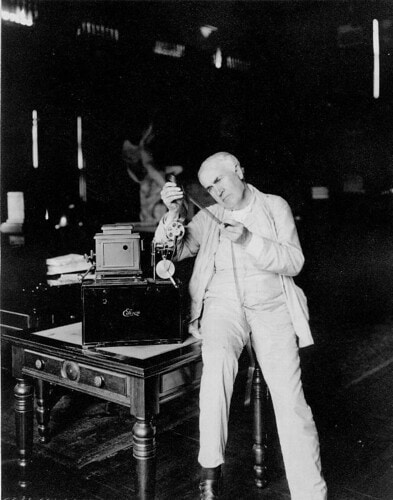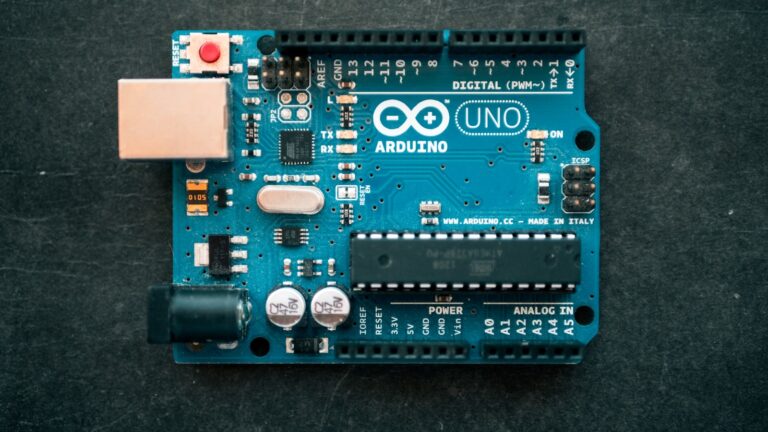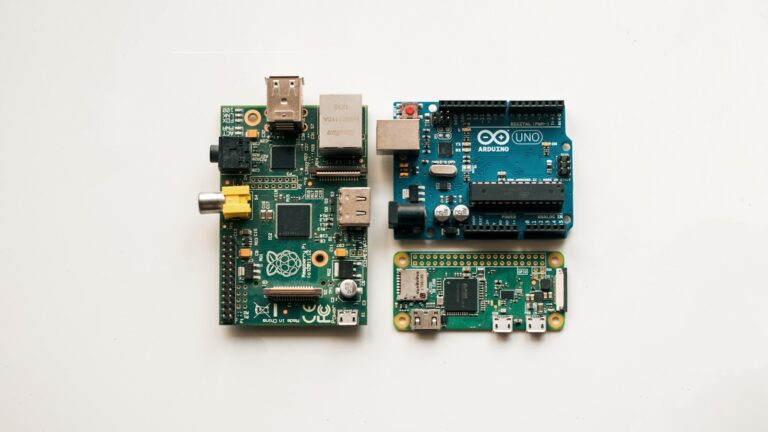
Thomas Edison is one of history’s most remarkable and celebrated inventors. Known for his relentless curiosity and drive, he contributed numerous groundbreaking inventions that transformed everyday life. His innovations include the light bulb, phonograph, and motion picture camera, among many others.
A key aspect of Edison’s success was his ability to improve existing technologies and make them accessible to the public. His work in electric power generation, sound recording, and mass communication showed his range and impact on modern technology. Edison’s achievements showcase his unique talent for blending scientific research with entrepreneurial spirit.
Edison held 1,093 patents, highlighting his prolific inventiveness and influence. Each invention not only revolutionized its industry but also demonstrated the power of perseverance and innovation. Exploring these inventions provides insight into how one individual can shape the technological landscape.
Image Credit: https://www.flickr.com/photos/42600860@N02/36233249321
Edison’s Legacy
The Electric Light Bulb
While not the original inventor, Edison’s version revolutionized the way we light our homes and cities. He improved upon previous designs, creating a long-lasting, practical incandescent bulb that became the standard.
The Phonograph
This groundbreaking invention brought recorded sound into homes, forever changing how we experience music and audio. Edison’s phonograph used tinfoil cylinders to capture and replay sounds, paving the way for modern music players.
The Motion Picture Camera
Edison’s Kinetograph and Kinetoscope were early motion picture devices that allowed for the creation and viewing of moving images. This innovation sparked the birth of the film industry and the way we enjoy entertainment today.
The Carbon Microphone
Edison’s improvement of the telephone transmitter, the carbon microphone, greatly enhanced the quality and clarity of telephone communication. This invention made telephones more practical and widespread, fostering global communication.
The Electric Pen
This innovative device, a precursor to the mimeograph machine, used a small electric motor to puncture tiny holes in paper, creating stencils for duplication. The electric pen was an early step towards office automation and efficient document reproduction.
Summary Table
| Invention | Impact |
|---|---|
| Electric Light Bulb | Revolutionized lighting and urban development. |
| Phonograph | Created the recorded music industry. |
| Motion Picture Camera | Birthed the film industry and modern entertainment. |
| Carbon Microphone | Improved telephone communication and global connectivity. |
| Electric Pen | Paved the way for office automation and document duplication. |
A Glimpse into His Groundbreaking Inventions
This table showcases some of Thomas Edison’s most notable inventions, demonstrating his vast contributions to various fields and his lasting impact on modern technology and society.
| Invention | Year | Description | Impact |
|---|---|---|---|
| Quadruplex Telegraph | 1874 | Enabled transmission of four messages over a single wire simultaneously | Increased telegraph efficiency and reduced costs |
| Electric Pen | 1875 | Precursor to the mimeograph machine, used for creating stencils | Paved the way for office automation and document duplication |
| Carbon Microphone | 1877 | Improved telephone transmitter, enhancing sound quality | Made telephones more practical and widespread |
| Phonograph | 1877 | First device for recording and replaying sound | Revolutionized music and audio entertainment |
| Incandescent Light Bulb | 1879 | Practical, long-lasting electric light source | Transformed homes, businesses, and cities |
| Electric Power Distribution System | 1880s | Pioneered central power stations and electrical grids | Enabled widespread use of electricity for lighting and power |
| Kinetoscope | 1891 | Early motion picture device for individual viewing | Marked the beginning of the motion picture industry |
| Kinetophone | 1895 | Combined the Kinetoscope with the phonograph for sound films | Early attempt at synchronized sound and pictures |
| Fluoroscope | 1896 | Used X-rays to view the internal structure of objects | Advanced medical imaging and diagnostics |
| Alkaline Storage Battery | 1910 | Rechargeable battery with longer lifespan | Used in various applications, including electric vehicles |
Key Takeaways
- Edison’s key inventions include the light bulb, phonograph, and motion picture camera.
- He improved existing technologies to make them practical for public use.
- Edison held 1,093 patents, reflecting his significant impact on various industries.
Key Inventions and Contributions
Thomas Edison revolutionized technology with his groundbreaking inventions. His work laid the foundation for modern electric power, recording sound, and motion pictures.
The Phonograph
Edison’s invention of the phonograph in 1877 transformed the world of sound. The device could record and reproduce sound using a cylinder wrapped in tin foil. This was the first practical method for capturing and playing back music and spoken words. The phonograph’s ability to record sound marked the beginning of the music recording industry and has had a lasting impact on technology and entertainment.
The Incandescent Light Bulb
Edison’s development of the incandescent light bulb made electric light practical for everyday use. Patented in 1879, the light bulb used a carbon filament to produce a steady, long-lasting glow. This invention provided a safer and more reliable light source compared to gas lamps. The incandescent light bulb also paved the way for the widespread use of electric lights in homes and businesses.
Electricity Distribution Systems
Edison created the first electricity distribution system to deliver electric power to consumers. In 1882, he opened the Pearl Street Station in New York City, which was the world’s first commercial power plant. This system provided electricity to homes, streets, and businesses, making electric power widely available. Edison’s work on electricity distribution systems significantly advanced the development and use of electric power.
Motion Picture Technology
Edison’s contributions to motion picture technology include the kinetoscope and kinetograph. The kinetoscope allowed one person at a time to view a motion picture through a peephole. The kinetograph was the first motion picture camera, which recorded moving images on a film strip. These inventions laid the foundation for the modern film industry. Edison’s motion picture technology enabled the recording and viewing of films, which changed entertainment and storytelling.
Entrepreneurial Ventures and Partnerships
Thomas Edison’s entrepreneurial ventures were key to his success as an inventor. His partnerships with notable figures and his development of research labs were important to his many achievements.
Menlo Park and West Orange Laboratories
Edison established the Menlo Park Laboratory in New Jersey in 1876. This was the world’s first research and development lab. Known as the “Wizard of Menlo Park,” he created groundbreaking inventions here.
Menlo Park became famous as the birthplace of the phonograph and improvements to the incandescent light bulb. Later, Edison established a larger lab in West Orange, New Jersey. This facility allowed for more extensive research and development.
Edison’s West Orange lab helped develop the motion picture camera and improved versions of his earlier work. The facilities were essential for his continuing innovations.
These labs were not just workspaces. They were hubs of innovation, attracting skilled workers and fostering collaboration among great minds.
Collaborations and Competitors
Edison’s success was also due to his partnerships with influential figures. J.P. Morgan was instrumental in funding many of his projects, including the founding of General Electric. This partnership helped commercialize Edison’s lighting inventions.
Edison also collaborated with Henry Ford. Ford and Edison shared ideas that advanced both the automobile and electric industries. Their friendship and professional relationship greatly influenced the growth of modern technology.
On the competitive side, Alexander Graham Bell was a noteworthy rival. Bell’s invention of the telephone challenged Edison’s work in communication technologies. Despite being competitors, both men pushed the boundaries of what was possible.
These collaborations and competitions were pivotal in Edison’s career. They provided both support and motivation, driving him to greater heights in his business ventures.
Frequently Asked Questions
Thomas Edison, a prolific inventor, created many influential devices. His work significantly shaped modern technology, making everyday life easier and more connected.
What was the first invention created by Thomas Edison?
Thomas Edison’s first invention was an electric vote recorder. He applied for his first patent for this device in 1868 when he was 21 years old.
How many patents did Thomas Edison have to his name?
Thomas Edison held a record 1,093 patents. This impressive number includes both American and international patents, showcasing his inventive spirit.
Can you name some of Thomas Edison’s most significant inventions?
Some of Thomas Edison’s most notable inventions include the phonograph, the practical electric light bulb, and the motion picture camera. These inventions revolutionized communication, illumination, and entertainment.
What impact did Thomas Edison’s inventions have on modern society?
Edison’s inventions laid the foundation for modern electric power distribution, recorded sound, and motion pictures. His work paved the way for advancements in home lighting, entertainment, and industrial automation.
In what year was Thomas Edison’s light bulb invention patented?
Thomas Edison patented his light bulb invention in 1879. This patent marked a significant step in creating the first commercially viable incandescent light bulb.
What were Thomas Edison’s contributions to the field of power generation?
Thomas Edison developed the first electric utility system, including the Pearl Street Station in New York. This system enabled the widespread distribution of electrical power to homes and businesses, leading to the modern electric grid.




